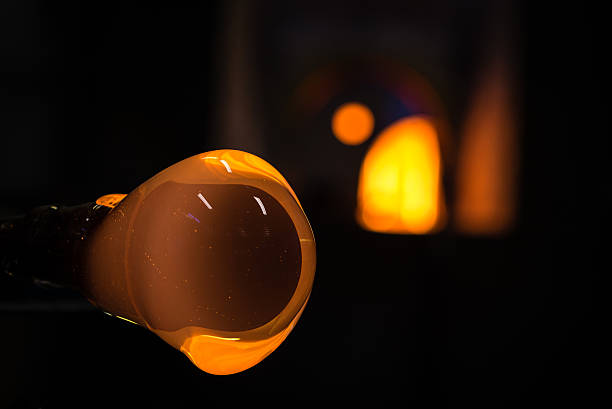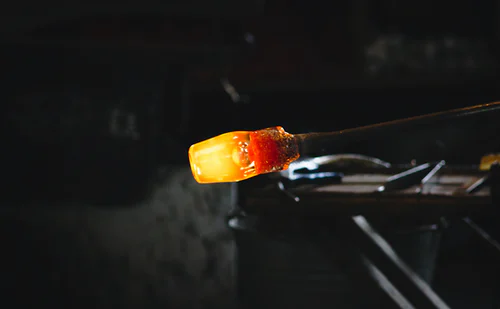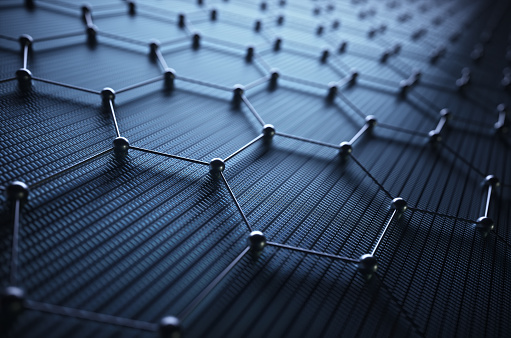Properties of glass - part 1
We all know glass as that solid, hard, yet brittle material that you can find almost anywhere; in the form of a window, a sculpture, or even a door. Glass has been a part of the human race since ancient times, and today we will look into the process and formation of glass.
Glass is a solid object, though unlike ordinary crystalline materials, the molecules in glass are unorderly. Must often, when you look at a solid object, you will find the molecules to be in a certain pattern. However, glass doesn’t follow these rules and may be found in many different arrangements.
Glass is produced through the rapid heating and slow cooling of molten materials. There are 3 main ingredients in glass making; Formers, fluxes, and stabilizers. Formers are the key ingredient to glass. It is most often made of silica, although silica has an extremely high melting point and is very difficult to work with. Henceforth, the use of fluxes. Fluxes such as Soda, Potash, and Lithia may be added to the former in the form of a carbonate substance in order to bring down the melting point of the former. Stabilizers, such as lime, magnesia, baria, and litharge, give glass specific properties such as strength and durability.
Many times when creating glass, we want the glass to be colorful. If it is for art or building material, color may need to be added. Henceforth, we use metals to create standard colored glass. For example, cobalt makes blue, chromium makes green, manganese creates violet, cadmium sulfide produces yellow, and selenium can make red or pink. It should be acknowledged that color is not only dependent on the metal used but also the composition of the glass. The same amount of metal but with different compositions may lead to widely different colors.

Glass, like all other materials has properties, and again, these properties vary differently depending on the composition, although we will focus on the most common glass.
Mechanical properties:
- Density: 2500kg/m3
- Hardness: 470 HK
- Compression Resistance: 800 - 1000MPa
- Modulus of elasticity: 70,000 MPa
- Bending Strength: 45MPa
Thermal Properties:
- Thermal Conductivity: 0.8W/mK
- Tempering & Softening: ~ 600 c
- Specific Heat: 0.8J/g/K
- Thermal Expansion: 9.10-6 K-1
- Transformation RangeL 520-550 c
When it comes to forming glass, there are many methods available. Over time these methods have been refined and perfected. Some techniques are ancient methods, glass blowing, and modern methods.
There are three basic ancient methods for crafting glass. The first method was done by pouring molten glass on the end of a clay rod, removing the glass, and shaping it into an object. This was known as the core forming method. Another ancient approach was known as sagging and fussing. Were rods of glass varying in color would either inside or outside a clay mold, causing them to be fused together. Then the fused glass would be removed and shaped. Lastly, there was the ancient method of casting. Were molten glass would be poured into a cast in order to create shapes. The ancient methods of glass forming are not ideal because it was very slow and tedious work that only created very small objects.
A more recent method of glass forming is known as glass blowing. When blowing glass, you attach a glob of molten glass to the button of a hollow metal rod. Then the glassmith will blow through the end creating a bubble that may be reshaped into many different shapes.

The modern methods of glass blowing are completely different. New innovative ways have been discovered for forming glass. Such as, the Ribbon Machine, which automatically blows glass light bulbs. It works so quickly that it can produce up to 1,000 bulbs per a minute. Although, one of the most innovative inventions of glass forming is the “float glass” process. Float glass is the flat glass most commonly used in windows and doors. During the float process, molten glass is flowed continuously in a tin at a temperature of about 1000c. In this high temperature the glass is spread into a thin layer. The glass then advances as 600c allowing it to become slightly solid. It is then annealed into desired sheet lengths. , Ke In my next blog I will be talking about the many different types of glass and their uses.
Sources:
-
Kolb, Kenneth. Glass, Chemistry Explained, http://www.chemistryexplained.com/Ge-Hy/Glass.html
-
Introduction to Glass, Sekurit, https://www.saint-gobain-sekurit.com/global-excellence/our-production-processes/glossary
